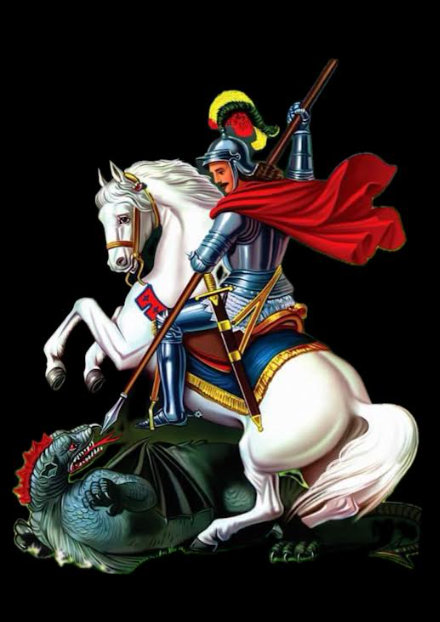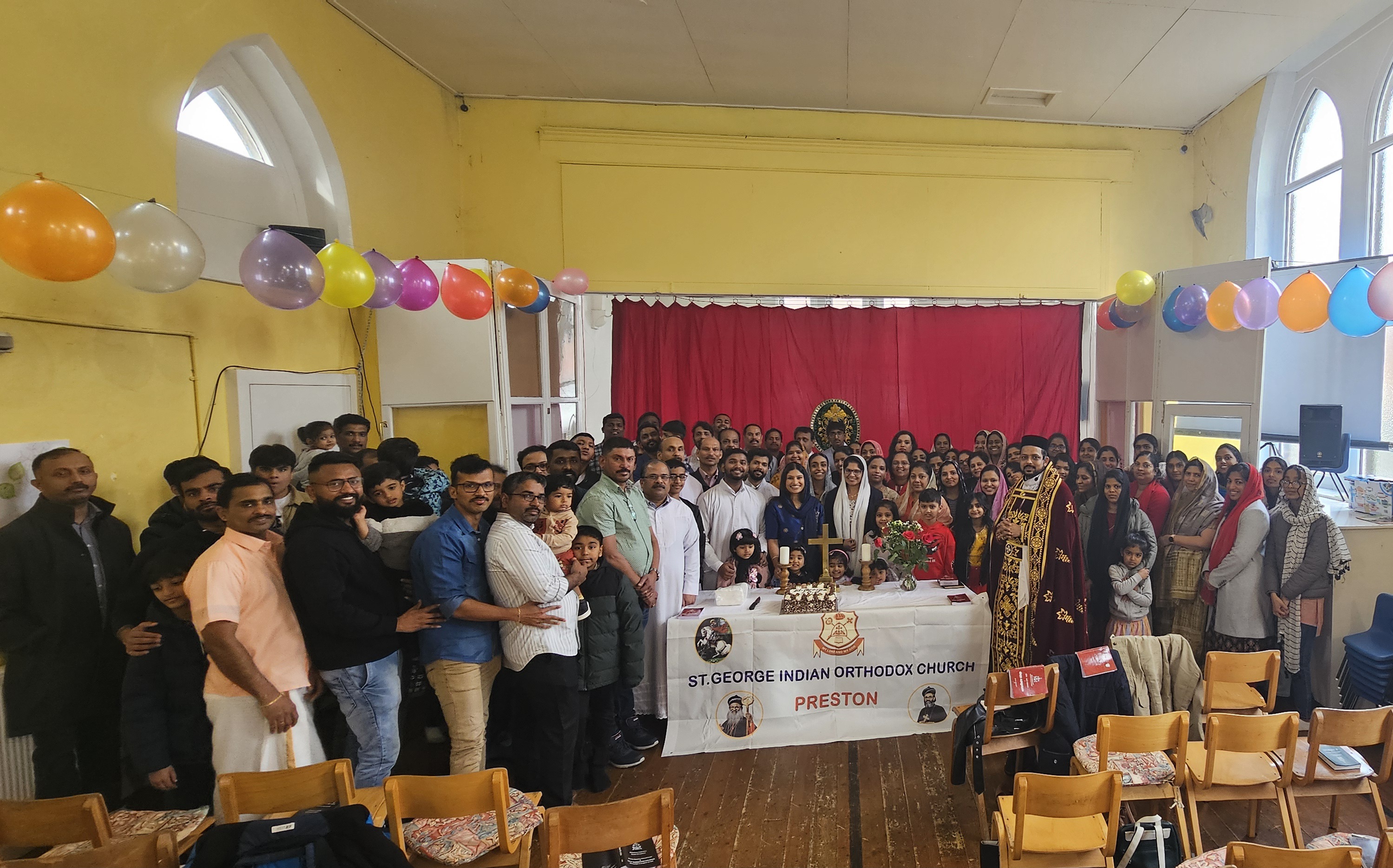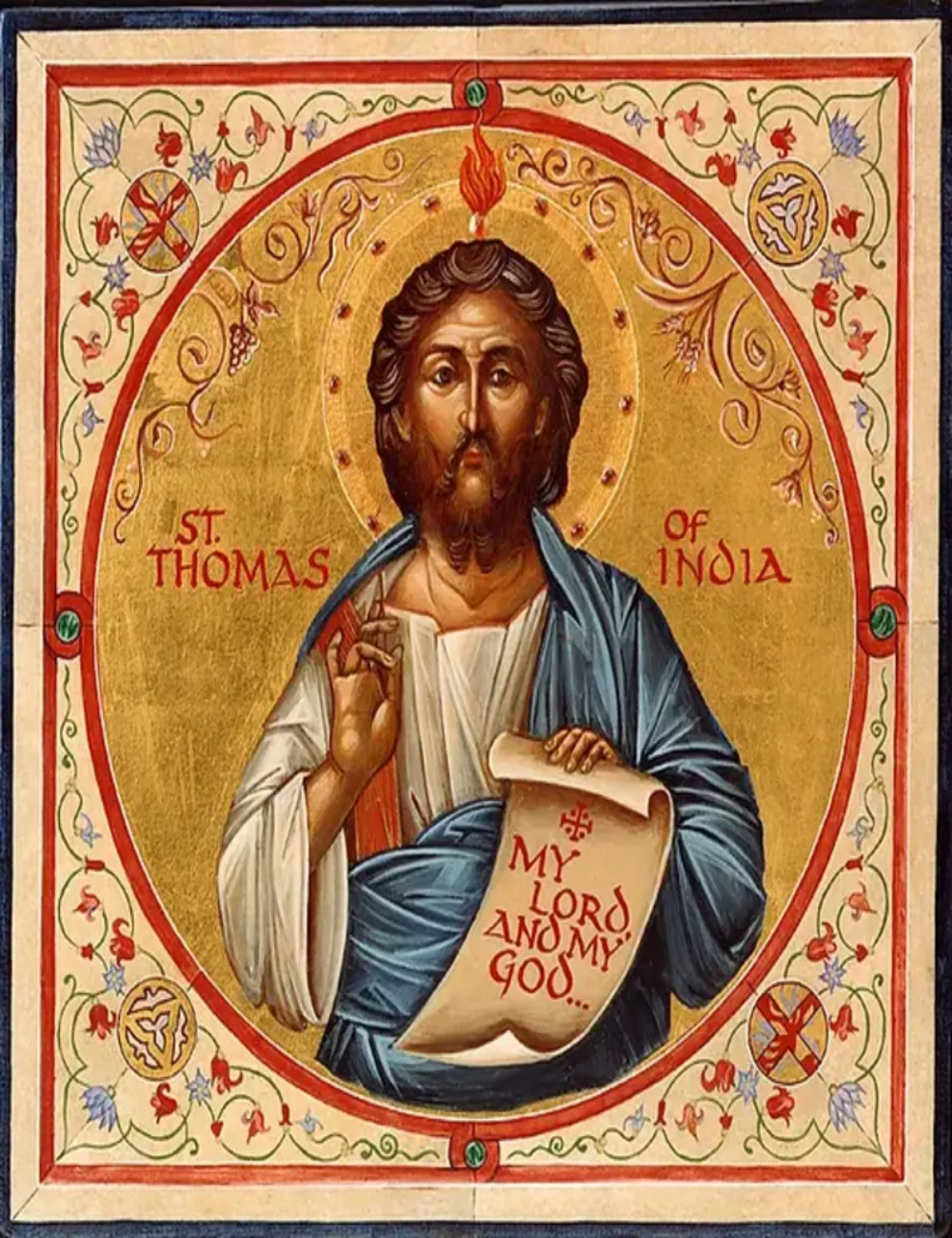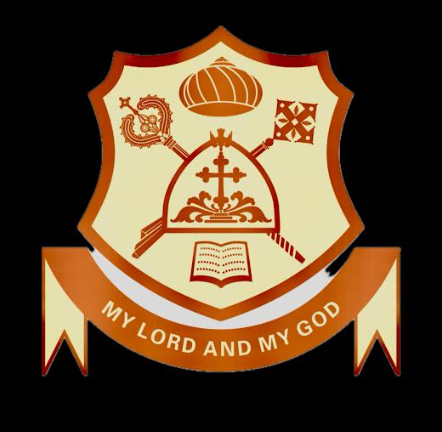 ST GEORGE PRAY FOR US
ST GEORGE PRAY FOR US
|
OUR PARISH  St. George Indian Orthodox Church in Preston, part of the UK-Europe & Africa Diocese of the Malankara Orthodox Syrian Church of India,
has a rich heritage dating back to its founding by St. Thomas, one of Jesus Christ's twelve apostles, who arrived in India in AD 52.
The establishment of the Malankara Orthodox Syrian Church in Preston began in 2003, initiated by the dedicated efforts of the Kerala
immigrant community. The then Diocesan Metropolitan, HG Dr. Mathews Mar Thimothios, officially sanctioned the formation of the
St. George Indian Orthodox Congregation in Preston and appointed Rev. Fr. Happy Jacob to conduct the Holy Qurbana monthly.
Over the years, the congregation grew significantly in numbers, and by 2024, it was officially recognized as a parish by the
Diocesan Metropolitan, HG Abraham Mar Stephnanos. This transition was driven by the congregation's request, leading to the formal
establishment of the Parish. Subsequently, Rev. Fr. Joseph K John was appointed as the first Vicar, tasked with celebrating the
Holy Qurbana on the second and fourth Saturday of each month. Currently, the parish boasts a vibrant community of over 50 families who
actively participate in the Holy Qurbana and other spiritual activities. The parish is also home to thriving spiritual
organizations including Sunday School, OCYM, and MOMS, all of which play a crucial role in the parish’s spiritual life.
Rev. Fr. Joseph K John, known affectionately as Anoob, has been serving as Vicar since August 2023 and continues to lead the community
in their spiritual journey. The parish is situated in Preston, Lancashire, in the North West of England.
St. George Indian Orthodox Church in Preston, part of the UK-Europe & Africa Diocese of the Malankara Orthodox Syrian Church of India,
has a rich heritage dating back to its founding by St. Thomas, one of Jesus Christ's twelve apostles, who arrived in India in AD 52.
The establishment of the Malankara Orthodox Syrian Church in Preston began in 2003, initiated by the dedicated efforts of the Kerala
immigrant community. The then Diocesan Metropolitan, HG Dr. Mathews Mar Thimothios, officially sanctioned the formation of the
St. George Indian Orthodox Congregation in Preston and appointed Rev. Fr. Happy Jacob to conduct the Holy Qurbana monthly.
Over the years, the congregation grew significantly in numbers, and by 2024, it was officially recognized as a parish by the
Diocesan Metropolitan, HG Abraham Mar Stephnanos. This transition was driven by the congregation's request, leading to the formal
establishment of the Parish. Subsequently, Rev. Fr. Joseph K John was appointed as the first Vicar, tasked with celebrating the
Holy Qurbana on the second and fourth Saturday of each month. Currently, the parish boasts a vibrant community of over 50 families who
actively participate in the Holy Qurbana and other spiritual activities. The parish is also home to thriving spiritual
organizations including Sunday School, OCYM, and MOMS, all of which play a crucial role in the parish’s spiritual life.
Rev. Fr. Joseph K John, known affectionately as Anoob, has been serving as Vicar since August 2023 and continues to lead the community
in their spiritual journey. The parish is situated in Preston, Lancashire, in the North West of England.
|
|
PATRON SAINT When King Edward 111th of England Heard about St George, he accepted him as patron saint of England. His photograph sitting on a horse holding a spear and killing the dragon was very impressive to the king. He looked very strong and powerful. It went along with English culture. Most of the other saints were thin and emaciated and physically weak people. Malankara Orthodox Church heard about St George long before English people heard about him. The People who knew St George thought that he had a pure heart(Nirmala Hredayan). Yet he had many enemies. They captured him as a prisoner, and brought forward false charges against him. He was in prison for seven years. He was tortured him very badly. For Example, his body was tied to a wheel and put his body upside down in the wheel. Then they rotated wheel over fire. His body was burned, but he did not curse the people who tortured him, or argue with them. His case was heard by 72 judges during a period of seven years. Holy spirit gave him the courage to face the situation and he could over come his enemies. Our people accepted St George as saint. Many churches were built in India in his name Our People were very happy to give the name George to their male children. Even Parumala Thirumeny, H.H Geevarughese 2nd Catholicose were very fond of their name Geevarughese which meant George. They actively encouraged people to seek the intercession of St George especially when had very difficult time in their life. |
|
The Throne of St. Thomas  The concept of the 'Throne of St. Thomas' is based on the words of our Lord Himself. In St. Mathew 19:28
it is written that ‘Jesus said to them: Amen, I say to you, you who have followed me, when the Son of Man
is seated on the throne of his glory in the rebirth, you yourselves shall also sit upon twelve thrones ruling
the twelve tribes of Israel’’. In Luke 22:28 our Lord says to the twelve "You are those who have continued
with me in trials. As my father appointed a Kingdom for me, so do I appoint for you that you may eat and
drink at my table in my Kingdom, and sit on thrones judging the twelve tribes of Israel"
The concept of the 'Throne of St. Thomas' is based on the words of our Lord Himself. In St. Mathew 19:28
it is written that ‘Jesus said to them: Amen, I say to you, you who have followed me, when the Son of Man
is seated on the throne of his glory in the rebirth, you yourselves shall also sit upon twelve thrones ruling
the twelve tribes of Israel’’. In Luke 22:28 our Lord says to the twelve "You are those who have continued
with me in trials. As my father appointed a Kingdom for me, so do I appoint for you that you may eat and
drink at my table in my Kingdom, and sit on thrones judging the twelve tribes of Israel"
The Malankara Orthodox Syrian Church was founded by St. Thomas, one of the twelve apostles of Jesus Christ, who came to India in A.D. 52. At least from the fourth century, the Indian Church entered into a close relationship with the Persian or East Syrian Church. From the Persians, the Indians inherited The East Syrian language and liturgies, and gradually came to be known as Syrian Christians. In the sixteenth century Roman Catholic missionaries came to Kerala. They tried to unite the Syrian Christians to the Roman Catholic Church and this led to a split in the community. Those who accepted Roman Catholicism are the present Syro-Malabar Catholics. Later, Western Protestant missionaries came to Kerala and worked among The Syrian Christians. This also created certain divisions in the community. In the seventeenth century, the Church came in to relationship with the Antiochene Church, which again caused splits. As a result of this relationship, t he Church received West Syrian liturgies and practices. The Church entered into a new phase of its history by the establishment of the Catholicate in 1912. At present, the Church is using the West Syrian liturgy. The faith of the Church is that which was established by the three Ecumenical Councils of Nicea (A.D. 325), Constantinople (A.D. 381) and Ephesus (A.D. 431). The Church is in communion with the other Oriental Orthodox Churches namely, Syriac, Alexandrian, Armenian, Eritrean and Ethiopian Orthodox Churches. The Church is in good ecumenical relationship with the Eastern Orthodox, Roman Catholic and Protestant Churches. This Church now consists of about 2.5 million members, who are spread all over the world, though the majority reside in The state of Kerala in South West India. The Supreme Head of the Church and the present Catholicos is H.H. Baselios Marthoma Mathews III. H H's residence and the Head-quarters of the Church is in Kottayam in the Kerala State of the South-West India. The Church as a whole is divided into 30 ecclesial units called dioceses and each diocese is served by a bishop, administratively and spiritually |
|
OUR MISSION Our mission is to the people of Indian origin in he British Isles, and though we are completely Orthodox in our faith and practice we remain Indian in our ethos and in our appreciation of the Orthodox heritage. The Malankara Orthodox Church, as part of the oriental orthodox family of churches, is in communion with the Coptic Orthodox Church, the Armenian Apostolic Church, the Syrian orthodox church, the Ethiopian Orthodox Church and the Eritrean Orthodox Church. But we also warmly welcome all who wish to worship and learn with us, whatever their culture. |
| St George IOC Preston
@ COPYRIGHT St George OCYM Preston |
Quicklinks About Us | Connect |
